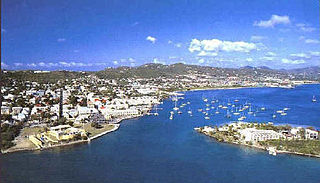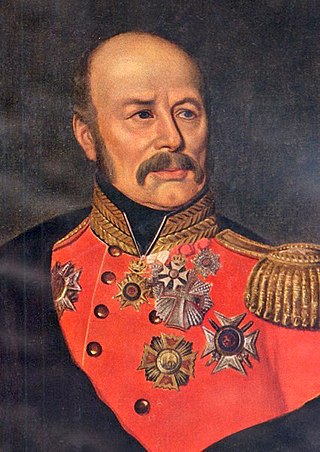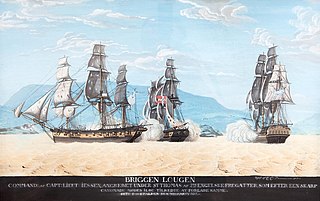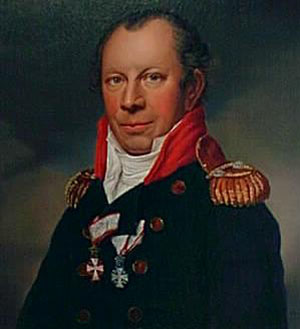Related Research Articles

The Danish West Indies or Danish Virgin Islands or Danish Antilles were a Danish colony in the Caribbean, consisting of the islands of Saint Thomas with 32 square miles (83 km2); Saint John with 19 square miles (49 km2); and Saint Croix with 84 square miles (220 km2). The islands have belonged to the United States as the Virgin Islands since they were purchased in 1917. Water Island was part of the Danish West Indies until 1905, when the Danish state sold it to the East Asiatic Company, a private shipping company.

Christiansted is the largest town on Saint Croix, one of the main islands composing the United States Virgin Islands, a territory of the United States of America. The town is named after King Christian VI of Denmark.
The Danish West India Company or Danish West India–Guinea Company was a Dano-Norwegian chartered company that operated out of the colonies in the Danish West Indies. It is estimated that 120,000 enslaved Africans were transported on the company's ships. Founded as the Danish Africa Company in 1659, it was incorporated into the Danish West India Company in 1671.

The United States Virgin Islands, often abbreviated USVI, are a group of islands and cays located in the Lesser Antilles of the Eastern Caribbean, consisting of three main islands and fifty smaller islets and cays. Like many of their Caribbean neighbors, the history of the islands is characterized by native Amerindian settlement, European colonization, and the Atlantic slave trade.

Peter Carl Frederik von Scholten was Governor-General of the Danish West Indies from 1827 to 1848.
Gabriel Milan was a Sephardic colonial administrator and planter who served as governor of the Danish West Indies from 7 May 1684 to 27 February 1686. Though he mainly went by the name of 'Gabriel Milan', he identified himself as "Don Franco de Tebary Cordova" in his correspondence with King Frederick III of Denmark-Norway. Like many of the early Danish West Indies governors, Milan's term was short, as he disagreed with the Danish management on several issues. He was called to Denmark after less than two years and executed after a lengthy trial.
Adolph Esmit was a Danish colonial administrator and slave trader who served as governor of St. Thomas in the Danish West Indies from 1683 to 1684, and again from 1687 to 1688. He was born in Holstein. His older brother Nicolai Esmit preceded him as governor of St. Thomas.
Jørgen Iversen Dyppel, also called George Iversen or Ifversen, or sometimes Doppel in Knox, was the first governor of the renewed establishment of St. Thomas in the Danish West Indies, from 1672 to 1680. His rule was marked by the work to construct a functioning colony and the difficulties of such a task.
Nicolai Esmit was governor of St. Thomas in the Danish West Indies from 4 July 1680 - November 1682. He was born in Holstein. His younger brother Adolph Esmit succeeded him as governor of St. Thomas.

Christian Henrik Arendrup was Governor-General of the Danish West Indies from 1881 to 1893.
Christopher Heins was a lieutenant and interim Governor-General of The Danish West Indies during two short periods, respectively 29 June 1686 to March 1687 and from October 1688 to 1689. Little is known about his career or personal life outside his reigns under company rule.
Johan Lorensen was a Danish colonial administrator who twice served as governor of the Danish West Indies from October 1689 to 17 September 1692 and 7 April 1693 to 19 February 1702. Little is known about his career or personal life outside his governorship in the West Indies.

HDMS Lougen was a brig of 18 guns, launched in 1791, and the name-vessel of her class of six brigs designed by the naval architect Ernst Stibolt. She was the first Danish warship to be copper-sheathed. She was active protecting Danish merchant shipping and suppressing pirates in the Mediterranean and in the Caribbean. In March 1801, she fought off the British privateer Experiment and the 22-gun warship HMS Arab in a single action. When the British captured the Danish West Indies in 1801, Lougen was part of the booty. The British later returned her to Denmark where she was broken up in 1802.

Carl Wilhelm Jessen was a Danish naval officer and Governor of St Thomas in the Danish West Indies.
Jean Hamlin was a French pirate active in the Caribbean and off the coast of Africa. He was often associated with St. Thomas's pirate-friendly Governor Adolph Esmit.
George Bond was an English pirate active in the Caribbean. He was known for acting in league with the pirate-friendly Governor of St. Thomas, Adolph Esmit.
The United States Virgin Islands are a group of around 90 islands, islets, and cays in the Caribbean region in which inhabitants were claimed by Spain in 1493. No permanent settlements occurred in the Spanish period and the islands were colonized by Denmark in 1671. The inhabitants remained Danish nationals until 1917. From that date, islanders have derived their nationality from the United States. Nationality is the legal means in which inhabitants acquire formal membership in a nation without regard to its governance type. In addition to being United States' nationals, Virgin Islanders are both citizens of the United States and [local] citizens of the Virgin Islands. Citizenship is the relationship between the government and the governed, the rights and obligations that each owes the other, once one has become a member of a nation.
Events from the year 1684 in Denmark.

The Capture of St. Michael or the Seizure of St. Michael, was a Danish seizure of a Bengali ship in the Bay of Bengal. The Danes captured the Bengali ship and the vessel was subsequently incorporated into the Danish Navy given the name St. Michael.